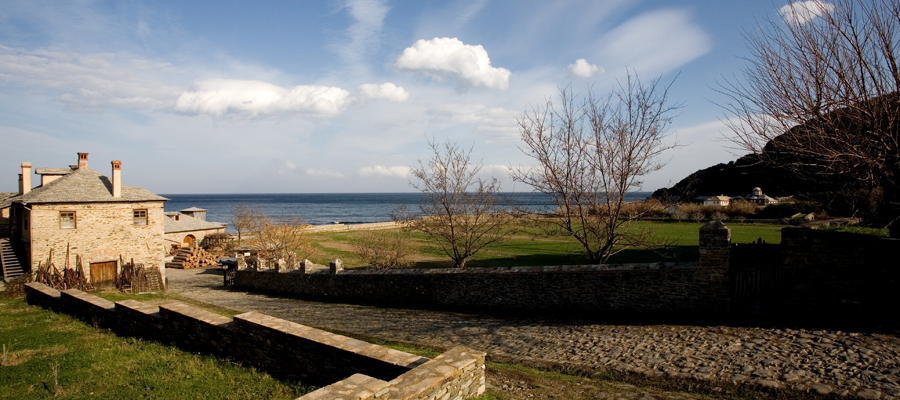Iviron monastery
The Georgian (Ivirian) monastery is located in a small cove in the northeastern side of Athos peninsula, 4km from Karyes. It is ranked third in hierarchy and seniority of the monastic state. It was founded between 979-90 by the ruler John Tornikois of Iviria, with the spoils from his victory against rebel Vardas Skliros. Between 1010 and 1020, it was named after an Iberian monk who previously lived in Megisti Lavra.
A manuscript copying workshop (scriptorium) in Georgian language, operated in the monastery, during the first years of its existence. Iberian monks, who were the cenobitic minority settled until 1357 when then it was passed on to Greek monks. The tradition of its origins is still kept, with the monks calculating the time by the Chaldean system, which is based on sunrise. It was repeatedly raided by Arabs and Catalans and was rebuilt in late 16th century with the support of Georgian and Romanian rulers. Tragic fact is its partial destruction from fire in 1865.
The Catholicon has been renovated and altered many times. Iberian George Varasvatze built it in 980-83. Theofanis Strelitzas made the frescoes. It is dedicated to Theotokos and is considered one of the oldest preserved buildings in Athos. In the chapel of Portaitissa, the pilgrim receives the blessing of the famous icon of Virgin Mary, beside of which a monk named “prosmonarios” always stands. One of the oldest towers of 22,5m height, is located in the arsana (harbor).
The probably oldest written record of a folk song of the 15th century, Gospels decorated with miniature icons, 2.000 manuscripts, codes from a parchment, many hundreds of prototype books and the famous illustrated codex of the 12th century with the life of Varlaam and Ioasaph, are among the things preserved there. The mantle of Gregory V, the imperial purple mantle of John Tzimiskes and the seven-light lamp in a lemon tree form masterpiece are some of its artifacts. The archive is the researchers’ valuable source of information about the byzantine topography and prosopography of Macedonia.
Text: Dr. Antonios G. Dikaios/ Theologian – Environmentalist.






